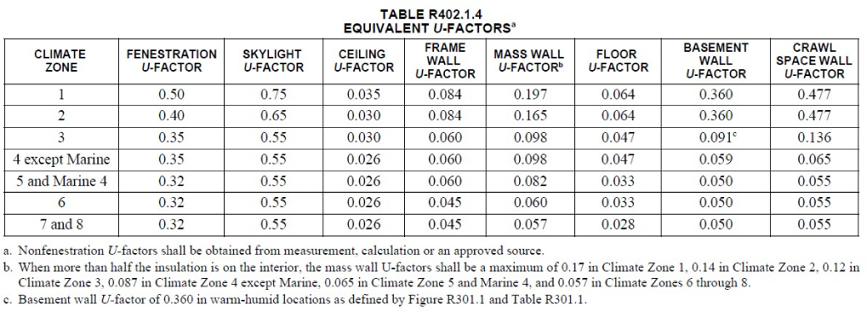Energy Compliance Pathways
If all these regulations seem like a lot to keep up with, don’t worry. You’ll be surprised to find that there is more than one way you can reach compliance. You can choose the best option that applies to your climate zone and the needs of your home to make the experience as painless as possible.
No matter what the compliance pathway you choose there are tests that still must be performed to ensure the building meets the minimum requirements of envelope tightness and duct leakage. This tests include:
- Duct Leakage Testing measures the allowable leakage of the duct system.
- Blower Door Testing measures the allowable air changes in the thermal envelope.
Here are five ways you can reach compliance:
The Prescriptive Pathways
- The Prescriptive Path in the 2015 IRC/IECC. By the book, just tell me what I have to do and that’s what I’ll do. This is the simplest compliance method. Builders only have to meet the minimum envelope requirements.
- Prescriptive Pathway in 2018 IRC/IECC. Builders only have to meet ONE of the energy enhancement options listed in the below table and maintains the minimum envelope requirements as in the 2015 IRC/IECC.

Performance Alternative Methods:
3. The U-Factor Alternative Method
Most builders use one of the two prescriptive methods above. There is nothing wrong with using the prescriptive method, but if flexibility is required, then consider changing the R-values and look at U-Factors that can be traded. As long as the total U-factor is equal or lesser then what would have been achieved using the prescriptive methods the building is in compliance. There are some mandatory requirements in the codes which can not be traded and there is no performance method around them. Refer to the table below for U-factor tradoffs.

4. The Performance Alternative Method
This method is similar to the U-Factor alternative method but instead of using U-Factor improvements you can trade off lower insulation levels in the building for energy improvements in other areas such as the ductless heat pumps, geothermal or water source heat pump, solar systems and other energy efficient technologies. This method requires approved software to ensure that the tradeoffs are equal or lower to the prescriptive method. As in the U-factor alternative method, there are some mandatory requirements in the codes which can not be traded and there is no performance method around them.
5. The Energy Rating Index Method
The ERI (energy rating index) of a home is rated 1-100. The lower the number, the greater the energy efficiency. It’s important to keep in mind that the entire purpose of these regulations is to increase energy efficiency. If that can be accomplished, then you are following the original purpose of the Energy Code. This allows for alternative routes to compliance, allowing you to compensate with more energy efficiency in alternative areas of your home unrelated to your building envelope. It means you can install more energy-efficient appliances, like lights or solar power, to make up for your energy inefficiencies found in other factors of your home. You trade off some energy requirements and use approved software to show that the home is equal or more energy efficient as if it was following the prescriptive path. This method is less commonly used as most builders can already pass energy codes easily with the above methods.
The best way to reach compliance is to use creative solutions, be flexible, and consider all of your options before deciding on the changes you want to make to your home. For more information on what you can do to improve your home’s energy efficiency, it’s best to rely on the expertise of your local Pennsylvania energy auditor.
Allow yourself some time to become familiar with these five options and decide what would work best for you. It’s essential to keep in mind that no component of your building envelope must meet the regulations. In other words, you can prioritize one aspect of your building envelope, such as your walls or attic, if another component of your home is lagging.